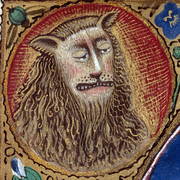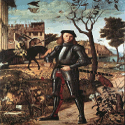|
veekie posted:I suppose it might weed out the total retards and lunatics then. The obvious answer to this is learning 'on the job' so to speak, or shadowing. People who might be expected to get into positions of power would probably get whatever education was normal then, or tutoring during early childhood. Once they got older, probably past the worst of childhood mortality they would spend more and more time with their father watching him do his work, perhaps given smaller things to run or do and get a more gradual introduction to their probable 'job'. The problems in this kind of system is when you have a spoiled child who doesn't want to learn, a thick child, or a father that doesn't give a poo poo. Also someone being thrust into power they didn't expect. I know its the kind of education that the Romans would try and give their children, certainly at the higher levels and it seems a very 'natural' way for society to pass on skills without an organised education system. Like father, like son so to speak.
|
|
|
|

|
| # ? May 9, 2024 16:49 |
|
veekie posted:I suppose it might weed out the total retards and lunatics then. Dunno, that account of Agincourt sounds like a classic modern management gently caress up to me. Ignore your outside contractors, recklessly push deadlines out of haste and go "gently caress it, we'll do it live", then get frustrated and fire everyone when it inevitably fails.
|
|
|
|
Sorry I didn't say this explicitly in the post, but the massacre of the Genoese mercenaries took place at Crecy, not Agincourt. In my opinion the French defeat at Agincourt was considerably less stupid and embarrassing than Crecy.
|
|
|
|
Railtus posted:Nothing springs to mind, although people might get appointed to power based on usefulness. It is arbitrary in the sense that political connections might take precedence, but at other times merit mattered a great deal. Often it was the Constable or Marshal of France in the Hundred Years War advising the cautious sensible battle plan while the impetuous lords wanted to rush blindly on, so I get the impression there was some meritocracy going on with their promotion or appointment to their positions. I have never heard that the Bretons supported William's invasion because they were sore about losing Britain to the Anglo-Saxons. It seems far more probable that, because of the longstanding involvement of Bretons in Norman politics, and vice-versa, there were much stronger personal and political bonds tying the Breton contingent to William. Alan III, for example, served as William's guardian during his youth, and William supported Rivallon of Dol against Duke Conan. Another important thing to remember is that during this period of Capetian rule in France the king was no more powerful (and when compared with William, noticeably less) than the other great princes of the land, and basically only controlled the area around Paris, from the Vexin to Orleans to Rheims, and even this control was not particularly secure. Louis VI spent much of his reign suppressing his own vassals, particularly Hugh III of Le Puiset and his extended relations like Guy I of Rochefort. It wasn't until Philip II that the kingdom of France can seriously be viewed as internally cohesive, especially with the elimination of the Angevins as a serious rival. edit: To the guy who asked about the invasion, what exactly do you want to know? I know you asked a couple questions, but is there anything else you want to know? I can tell you some things, but I'll be drawing heavily from secondary sources, since the only primary overview of that campaign I have is Wace, who is only ok on the subject. Should really pick up a copy of William of Poitiers. For the Battle of Hastings itself, you should look for R. Allen Brown's article on the subject, which as far as I know is the best thing written about it to date. Rodrigo Diaz fucked around with this message at 18:43 on May 18, 2013 |
|
|
|
Rodrigo Diaz posted:I have never heard that the Bretons supported William's invasion because they were sore about losing Britain to the Anglo-Saxons. It seems far more probable that, because of the longstanding involvement of Bretons in Norman politics, and vice-versa, there were much stronger personal and political bonds tying the Breton contingent to William. Alan III, for example, served as William's guardian during his youth, and William supported Rivallon of Dol against Duke Conan. First of all, welcome back, not heard from you for a while. I got it from Dorsey Armstrong (Great Courses: Medieval World) but I find your reasons more convincing, since the Bretons were ousted a long time before 1066 and could have supported other attacks on England if all they wanted was to kick out the Saxons. Your point about the weakness of the French crown does bring up an important note; that the power of great princes was not always reflected by whether their title was technically king or prince or duke. The German Kaisers often had trouble getting support from their vassals, and England had so many civil wars I think it should replace football (soccer) as our national sport.
|
|
|
|
I promised to do some themed posts so here are some demons The idea of different kinds of demons that each have their own job is a relatively new one. Demons in medieval literature basically represented "everything that sucks", meaning storms, dangerous animals, types of sin, bad thoughts, evil animals, enemy people, the devil and so on. They didn't have one set shape but were usually made up of several kinds of animal and human parts. They are often portrayed while forcing people to enter the mouth of hell, most commonly shown as the head of the monster Leviathan whose fiery breath is used to cook the sinners in a giant pot. I don't know which sins the ones in the pot represent but the guy being carried is clearly a medieval Johnny Bravo:  Bonus: I'm pretty sure that the fact that we can see Johnny Bravo's anus is a reference peacocks as a symbol of vanity. Peacocks cannot raise their magnificent feathers without also exposing their anus, showing that giving in to vanity reveals your inner ugliness. They were also often made up of several types of heads. These assholes are trying to keep this guy from reaching heaven.  Demons trying to tempt a saint. By making GBS threads on him while playing music.  Medieval demons did not have three-pronged pitchforks, the type the guy on the left is holding is the traditional one. Much better suited for pulling people into hell.  This demon will not be cheered up:  The Shittiest Demon  The mouth of hell as a bat. Bats were considered evil because they only flew in the dark and looked like rats.  From the category "as seen on Monty Python"   Pedantic fucks have never been popular: "Charity admonishes demons representing ‘knowledge without love’ which does no good, but ‘inflates man with an empty windiness’.”  I should hang a giant poster of this at work. Replace the tables with a counter and put the demons on bar stools and there's my life. Death loving everyone's poo poo up with his motherfucking ox-drawn giant coffin tank 
PiratePing fucked around with this message at 13:59 on May 19, 2013 |
|
|
PiratePing posted:I promised to do some themed posts so here are some demons It was widely believed that they had no body at all. This was because if they had a body they could be redeemed and that was something that demons shouldn't be able to be. Caesarius of Heisterbach even writes about a demon who's greatest wish is to have a body capable of suffering so he could drag himself to heaven through a burning iron column covered with razors. Also, one of the jobs a demon had to do was to collect sperm so that they could make their own monsters.
|
|
|
|
|
[quote="PiratePing" post="415607462"] Death and demons stuff [\quote] Why were bodies made of faces attributed to demons? I could understand a demon made up of phalluses or something (truly the Devil's tool
|
|
|
|
Alhazred posted:Caesarius of Heisterbach even writes about a demon who's greatest wish is to have a body capable of suffering so he could drag himself to heaven through a burning iron column covered with razors. Do you think writers like this actually believed that kind of thing or if they were writing something more like genre fiction, something that they knew they were making up but that was supposed to serve a theme or point?
|
|
|
Arglebargle III posted:Do you think writers like this actually believed that kind of thing or if they were writing something more like genre fiction, something that they knew they were making up but that was supposed to serve a theme or point? Its not like Caesarius was referring to a real life conversation between demons about the nature of redemption, but people absolutely thought that demons was real and had long discussions about their nature. It got to the point where a monk was complaining about a succubus roaming about in the convent at night and the abbot would just shrug his shoulder like it was a stray dog or something.
|
|
|
|
|
Alhazred posted:Its not like Caesarius was referring to a real life conversation between demons about the nature of redemption, but people absolutely thought that demons was real and had long discussions about their nature. It got to the point where a monk was complaining about a succubus roaming about in the convent at night and the abbot would just shrug his shoulder like it was a stray dog or something. Technically, Catholics still believe in the devil and demons and that they're around. I believe much of the demonic imagery and supposed behavior are tied up in the writings of the early saints, but I'm not a theologian or historian so I might be mistaken.
|
|
|
|
Slate ran a little question/answer thing today that deals with something that sometimes comes up in this thread. I don't speak to its accuracy, knowing nothing about the subject: http://www.slate.com/blogs/quora/2013/05/21/medieval_europe_why_was_water_the_most_popular_drink.html
|
|
|
|
NEED TOILET PAPER posted:[quote="PiratePing" post="415607462"] I don't really know, I'm not an expert on medieval symbolism. The facial expressions are often pretty vacant or laughing evilly, although I have seen them express emotions independant of the 'main face' too. Demons were believed to be fallen angels and their hideous form was meant to reflect their unnatural, distorted nature. The many faces thing would maybe read to them as a reference to them being two-faced liars, the many faces of Evil, "I am Legion; for we are many" and so on. I'm pretty sure they'd piss themselves laughing at some dude from the future going "Demonic faces? Why, a dongmonster, now THAT would be really scary!" though  Arglebargle III posted:Do you think writers like this actually believed that kind of thing or if they were writing something more like genre fiction, something that they knew they were making up but that was supposed to serve a theme or point? Demons were everywhere, lurking around every corner in disguise to trip you up and make you sin. Stories about them were also were often used to illustrate certain points, like in your quote: "Don't mind suffering because it will bring you closer to God". Demons didn't just do the obvious big sins, they were also disguised as (or the embodiment of) all the mundane little temptations a human being has to make choices about every day: all the tiny acts of egotism that don't matter that much but where you know that you could have been more charitable and generous.  Take this picture I posted earlier: "Charity admonishes demons representing ‘knowledge without love’ which does no good, but ‘inflates man with an empty windiness’.” The maker of this doesn't think that every person he meets who likes to stroke his own ego with his knowledge of facts is a demon, he just wants to point out that you should beware of this pitfall because it makes you a dick and won't lead to true wisdom. On the other hand, it is the Devil who is trying to make you think that this is an okay way of thinking/being. You need a lot of self-awareness to separate the bad/evil thoughts from the good/godly thoughts. The only way to exorcise demons like these is to genuinely try to be a good person. Your own bad qualities are the demons but they're also really demons. Also they had a very different idea of knowledge in the Middle Ages which is an extremely interesting topic I'm totally not equipped to talk about. Anna Wierzbicka wrote a wonderful book on the etymology of the word 'evidence' and how it evolved along with the ideas about knowledge from the Middle Ages to modern times.
|
|
|
|
How do you pronounce, "Agincourt?" (PiratePing, those are fantastic pics.)
|
|
|
|
Lincoln posted:How do you pronounce, "Agincourt?" A as in apple G like a french J, as in J'adore in as in gin court with a silent T, closer to coors the beer. At least as far as I know.
|
|
|
|
a very nice HEMA demostration from Turin Italy https://www.youtube.com/watch?v=qkeNVhofprE
|
|
|
|
Giodo! posted:Slate ran a little question/answer thing today that deals with something that sometimes comes up in this thread. I don't speak to its accuracy, knowing nothing about the subject: I've been thinking about this for a while. Water was obviously a plentiful drink, and castles nearly always (and this presumably extends to counter-castles but I do not know for sure) had a well within their walls. When Robert Curthose and William Rufus besieged their brother Henry in Mont-Saint-Michel, Robert sent in water as a mercy to Henry. Clearly clean supplies of water were fairly accessible. However, I seem to recall info for an archaeological dig in Rouen that found personal wells placed close enough to cesspits to lead to contamination. Going off memory for this, though, so someone with access to archaeological stuff would know better. This guy's information seems highly selective. The key example he cites for water distribution is London, but this doesn't come until the 13th century, and even then may not have been typical (though I think York had some kind of similar cistern/aqueduct type deal). While he notes tanners and dyers had ordinances detailing where they could work, he fails to remark upon the fact that butchers did not. His comment on the use of beer as 'gatorade' is highly speculative, and assumes a level of knowledge that I do not think can be safely made about the drink. Besides, low alcohol beer has few calories, so his implication that small beer was drunk for this reason does not really stand up to scrutiny. I would guess small beer was drunk because drinking nothing but water is boring as gently caress.
|
|
|
|
PiratePing posted:
Ah Dunning Kruger, older that dirt. Also, was there something like Grapeshot for catapults? Aka designed to break up into small ball bearings to kill or maim infantry?
|
|
|
|
gyrobot posted:Also, was there something like Grapeshot for catapults? Aka designed to break up into small ball bearings to kill or maim infantry? Ahaha what? No. Also grape isn't just for infantry. Catapults would sometimes throw pottery that would shatter and spray shards but catapults weren't hauled around in the field, they were built at a siege. Additionally, they simply don't accelerate projectiles quickly enough to rip apart the rope and canvas of grape and even if you could fine some other way to deliver them, they wouldn't be going terribly fast.
|
|
|
|
Today's theme is Wrath of the Rabbits The Hunt of the Rabbits may be a common theme in manuscripts but Lady, you don't know what you're dealing with here.    They may seem like simple, God-loving creatures...  Who love to read books even if there's a squirrel nibbling on their ear (source says fox but that's not a fox But sometimes... the rabbits hunt back      In medieval art dogs and rabbits have a kind of Tom & Jerry relationship:     (There's a dog in the pot at the back) Rabbit justice: a picture story       Poor dog, that was not a fair trial.
|
|
|
|
Also snails: Snail and a butterfly    Snail houses  Catsnail   Mighty steeds  Snail guy? Knights afraid of snails was apparently funny:  Oh poo poo a snail!  Oh God please make it go away!  Stay back!  Oh poo poo I dropped my sword! (Bottom left, floating snail) PiratePing fucked around with this message at 17:26 on May 25, 2013 |
|
|
|
PiratePing posted:Today's theme is Wrath of the Rabbits There are more than just a few Monty Python jokes lurking about in this post...
|
|
|
|
Rodrigo Diaz posted:Ahaha what? No. Also grape isn't just for infantry. The same effect or better could probably be achieved just by using slingers. In general I think a lot of people vastly overestimate the battlefield utility of siege weapons. There's a reason for why they're called siege weapons.
|
|
|
|
gyrobot posted:Ah Dunning Kruger, older that dirt. Not that I am aware of, and as others have said siege weapons like catapults and trebuchets really weren't used outside of sieges, but they might have been deployed in a defensive matter by a castle or city's defenders, so its not like they lacked anti-personnel qualities all together. During the siege of Jerusalem at the end of the first crusade the garrison used various war machines; ballistas, mangonels and maybe incedniary weapons, to defend themselves. Indeed many of you are probably familiar with the idea of Muslim "naptha trowers/naffatun". Incendiary weapons were a huge hit across the Middle East and Central Asia, to the point that any ruler with a decent military should have a corps of pyrotechnical troops, there have even been finds of specialized fire-proof clothing, probably used by such troops. It is clear that they used ceramic containers (many just call them grenades) filled with naphtha, and from the middle of the 13th century many excavated grenades also show traces of gunpowder in them, which would probably make them a more effective weapon, maybe even as primitive fragmentation grenades rather than purely incendiary weapons. Though these weapons weren't just thrown they were also thrown by catapults, shot from ballistas (sometimes a ring shaped grenade fastened to a javelin) and some evidence even point to specialized hand-held "egg-crossbows" being used to shoot naphtha grenades. Aside from these siphons and various other means of burning people were also used to the extent that wooden siege weapons, particularly siege towers became practically obsolete leading to mining and sappers becoming the new deciding factor in sieges.  Kind of spun into a thing about incendiary weapons here... Hope that's okay
|
|
|
|
MrYenko posted:There are more than just a few Monty Python jokes lurking about in this post... There Are more than a few medieval jokes in Monty Python
|
|
|
|
What is H? Some kind of fire mace?
|
|
|
|
Prototype potato masher maybe?
|
|
|
|
I wonder if the repeated scale-like pattern is intentional, to cause it to fragment along those fault lines, or just decorative. Anyway, neat and purty. It reminded me that there's a few citations of the Mongols using devices that created really bad smells that disoriented people. Anyone have any clue what that was? Just burning a bunch of poo poo (maybe literally) to confuse the enemy, or was there something particular that was used for noxious smokescreens in medieval warfare?
|
|
|
|
Rockopolis posted:What is H? Some kind of fire mace? It's a grenade from Iran, pretty much a medieval potato-masher as someone already stated. As for the scales I'm not sure. These illustrations are based on surviving samples found by arcehologists, and they were found to contain traces of burnt materials and many of the later ones contained gunpowder. They mostly date from the 12th-14th and match the mention of naptha grenades used by Muslim pyrotechincal troops. The ones with the scales are all 13th century or later, though d and e are 12th century from Abu Dhabi and Burma. The fact that the earlier ones are mostly without scales and rather plain, and the fact that these are grenades meant to explode and burn people, not decorative pots, could suggest that the scales serve a purpose. Randarkman fucked around with this message at 18:46 on May 26, 2013 |
|
|
|
probably so the casing fragments more and creates more shrapnel, see also how the American pineapple grenade has a similar scaly look.
|
|
|
|
It's probably to improve the grip rather than to produce more shrapnel.
|
|
|
|
Railtus posted:
Railtus posted:
This is from way back, but I'd like to just bring it up to give it fleeting mention, as I have read Usamah ibn Munquidh's book and found it quite interesting and entertaining. I wouldn't really say that Kitab al-l'tibar is a sort of poem/tale, it's pretty much his memoirs; a story of his exploits (mostly killing lions, worth mentioning that lions in Syria were hunted to extinction by the 13th century or so) and he intends them to be entertaining yes, and he also inserts his own poems every once in a while. But I'd say the primary reason that the story about the Frankish physician who cuts a cross into a woman's skull to cure her is unreliable is not because of the prose of the text or such, it's mostly that its flat out stated that this is a story that Usamah heard from a friend who knew a guy who was there, which is always kind of unreliable. And immediately following this story are two others about Usamah himself personally witnessing Frankish physicians and medicine actually working rather well. Also throwing myself in here if anyone has any questions about medieval Islamic history and such, I can provide what I can in terms of answers and such. It seems that most of the thread has focused on Europe, which is well and good, but I guess there's no harm to include medieval Islamic history as well, it's more similar than many people think (especially as they had, in the levant and Iran, their own version of feudalism), and there's the crusades. I originally planned to study that at university, but something led to me wanting to study physics instead. Though I still have quite a few books on the matter, even though it is a while since I read most of them, and I would like an excuse to brush up on my knowledge and possibly even look for a few new books (university library might have some) to better answer questions. Randarkman fucked around with this message at 20:16 on May 26, 2013 |
|
|
|
So how did the feudalism in the levant and Iran work? Since I thought that most Muslim rulers in the middle east used slave soldiers as their core troops.
|
|
|
|
Question: What was life expectancy like for common folk in the early to high middle ages? Nobles, if not killed in action seem to live to their 50s quite easily. And I get the impression that most peasants died by 40. Just how bad was life expectancy?
|
|
|
|
Amyclas posted:Question: What was life expectancy like for common folk in the early to high middle ages? High infant mortality pulls life expectancy down: if you survived until you were two, you could reasonably expect to see your sixties.
|
|
|
|
Lord Tywin posted:So how did the feudalism in the levant and Iran work? Since I thought that most Muslim rulers in the middle east used slave soldiers as their core troops. You are not incorrect. Certainly it is true that most Muslim rulers in the Middle East built their army around a corps of slave soldiers, usually Turkish cavalry, but the whole matter is somewhat more complex than just that. It started with the breakup of the Abbasid empire n the 9th and 10th centuries, which towards the end also had relied on a system of slave soldiers and foreign mercenaries to make up their armies. As the empire fell apart ambitious rulers seized power for themselves, basing their power on their slave soldiers and their foreign mercenaries. One of the most powerful were the Buwayhids who seized power in Iraq and western Iran, they recognized the Abbasid caliph as spiritual head, and allowed him to retain the right to make appointments to religious offices, but he had to surrender his lordship over the land which the Buwayhid brothers divided up amongst themselves, soon they were fighting each other for power and influence. The constant warfare and economic decline of the late Abbasid period made it hard to maintain a central bureaucracy that could collect taxes and oversee the empire, and so also made it hard to provide salary to soldiers. Despite being slaves, mamluks (or ghulams as they were often known in the early middle ages) received salaries, and many (in some states most) were actually freed at the completion of their training, though they were expected to remain beholden to their master. In lieu of payment soldiers were therefore given iqta, land grants from which they could collect taxes to pay for their equipment, raise retainers and recieve salary. This was not hereditary and could be revoked at the behest of a soldiers master and did pass on to a soldier's son. When the Seljuks entered the scene and conquered the Middle East in the 11th century they introduced many of their own customs, notably the institution of the Atabeg (or Atabey). An Atabeg was a tutor and regent assigned to Seljuk princes still in their minority, governing the land in his name until he came of age, he was also entitled to marry his ward's mother should something ill befall him. This seemed to happen quite often and by the 12th century many Atabegs were practically independent rulers, particulary in Iraq and Syria, establishing dynasties of their own as they became the hereditary rulers. At the same time the loss of Seljuk central power would lead to the iqta land grants becoming hereditary in nature transforming the slave soldier elite from an army loyal only to the ruler into a military aristocracy of its own, by using force to impose their power over the iqta and its inhabitants, usurping it from the ruler who owned it in theory. This system of military regimes centered around a core of, usually Turkish, slave soldiers who received land grants, that were practically hereditary, would continue throughout the Middle ages and be continued, in part, by the Ottomans through the Timar system (though this owed almost as much to Byzantine practice and was somewhat different both in practice and theory IIRC). However it is not entirely correct to term this entire thing simply as feudalism in the Middle East. A vassal under the feudal system had rights, as well as duties, whereas a subordinate of a Muslim ruler had no such rights and could (in theory) have his property and liberty and even his life revoked at the whim of the ruler. A large part of this is because the subordinates of a Muslim ruler were, often as not, his actual slaves (or slaves he had freed), however to be a slave in such a way was not to be at the bottom of society, a slave of a sultan could be a general or a governor, with slaves of his own serving as officers and elite soldiers. Sometimes these slave soldiers would even seize power for themselves and establish dynasties of their own, most famous are the mamluk dynasties of Egypt, but mamluk dynasties also existed in eastern Iran, Afghanistan and India. The difference between the military aristocracies of Europe and the Middle East was that the former were free men with rights that the ruler could not (in theory) violate, while the ones of the Middle East were often literal slaves of the ruler, but their accumulation of power at the cost of the ruler enabled them to establish hereditary rule over their iqta land grants, in practice giving rise to semi-feudal system that lasted throughout the Middle Ages and beyond. Randarkman fucked around with this message at 23:11 on May 26, 2013 |
|
|
|
What exactly is the deal with slavery in the middle east? Cause I've read Ibn Battuta's book and one of the things that I noticed is that he was absolutely disgusted by men he met holding slaves in Turkey but he himself later admitted he held slaves (including 2 girls in a dubious position) which seems somewhat ironic. What made his slaveholding acceptable for him while the others were unacceptable?
|
|
|
|
To explain the bit about everybody being the literal slave of the ruler, people often read "slave" and assume it means something like chattel slavery, such as they are familiar with from more recent European and American history. Islamic slavery was something rather different, with a number of firm religious laws and directives governing the relationship between owner and slave and defining their mutual obligations. Slaves were considered minors in the household of their owner, similar to a woman or a child. In pre-modern times the concept of the state as its own discrete entity hadn't been established and in most of the world the ruler and his family (or dynasty) functioned as the state. Somebody who was not directly related to a ruler became a member of his household if he was the ruler's slave, therefore it made sense for official positions to be filled by the Sultan's slaves because they had that immediate connection and could derive authority from it.
|
|
|
|
Davincie posted:What exactly is the deal with slavery in the middle east? Cause I've read Ibn Battuta's book and one of the things that I noticed is that he was absolutely disgusted by men he met holding slaves in Turkey but he himself later admitted he held slaves (including 2 girls in a dubious position) which seems somewhat ironic. What made his slaveholding acceptable for him while the others were unacceptable? Can you quote the part where he is disgusted with slavery among the Turks? I can mostly find instanced of him only casually mention that there were so and so many slaves accompanying this person, and that some were Greeks and others were Indians and such. And he mentions in passing that he himself bought a greek slave girl for 40 dinars. Though there is the part where he is skeptical of the slave girls in a bath house which the guests and owners are free to use as they wish, but to me it seems that he is more disgusted with the sexual depravity of the whole thing, rather than the fact that the women are slaves. EvanSchenk already said some about the status of slaves in Islamic society, and I said some about miltiary slaves. Generally speaking there was a lot of different kind of slaves, who could hold various social positions, even going as far as being rulers. Generally speaking slavery was viewed as a natural part of society, though you could enslave a Muslim or your own subjects, and freeing infidel slaves who converted to Islam was generally looked on as especially virtous. Slaves came from everywhere outside the Muslim world, from both western and eastern africa as part of the especially long live Arab Slave Trade, but throughout middle ages (especially so from the 9th-11th centuries) Muslim pirates in the mediterranean enslaved whole communities in Italy bringing them to the slave markets in Sicily, Tunis and elsewhere, Slavic slaves bought from Vikings or Jewish middle-men were also especially common. Generally enslaved women were fated to serve as household servants or as concubines as part of a ruler's palace. Many young boys or handsome men were also sold as harem slaves, especially as eunuchs where there eventually developed a practice of white eunuchs only having their balls removed and black eunuchs getting their penis sliced off as well. Military slaves was also a particulary Islamic practice, this included not just Turks but also Africans and Slavs, though those were usually infantry and palace guards (sometimes eunuchs), while the Turkish slaves (sometimes just called 'white slaves') were elite cavalry, officers and governors, and later would even become rulers of entire states. Chattel slavery for agricultural work on plantations existed in the Abbasid empire, particularly in the salt marches of Southern Iraq where a plantation economy had developed. But a great slave revolt (though some are divided on whether or not it was wholly a slave rebellion), the Zanj rebellion (Zanj was a general term for black people), seems to have convinced most of the Islamic world that gathering such large numbers of slaves tohether and subjecting them to arduous labor was a recipe for disaster, and such slavery became uncommon to the point that it became insignificant. I'm not completely sure why Ibn Battuta was disgusted by the slavery he saw among the Turks, though to me it seems he was more disgusted by the kind of slavery he saw, which makes sense as slavery in the Islamic world was very widespread, very pervasive and very diverse. One did not usually question the morality of slavery, but one might look upon certain forms of slavery as immoral, such as enslaving one's own dependents, a Muslim, a master not freeing a converted slave, or even in Ibn Battuta's case considering a slave-staffed brothel an immoral thing.
|
|
|
|

|
| # ? May 9, 2024 16:49 |
|
Let's talk infrastructure! Who built and maintained the roads in medieval Europe? I get the impression that the old Roman paving was frequently torn up for building materials, but what about the roadbeds themselves--Who kept them navigable? At which point after the fall of Rome did people start maintaining and building them again, and how was that organized?
|
|
|





























